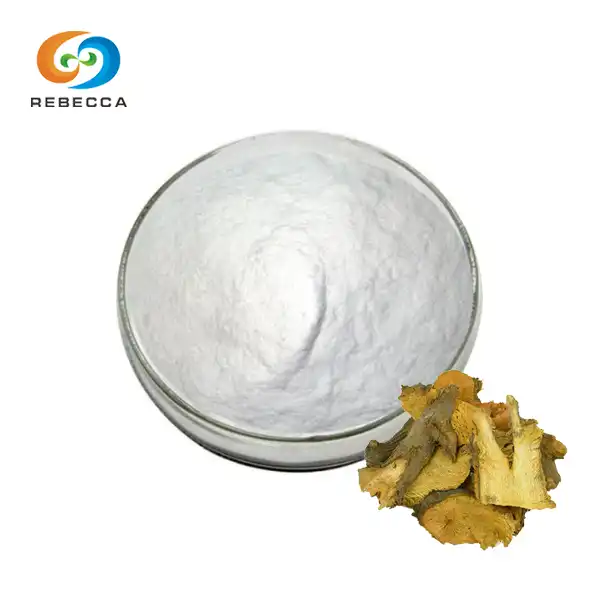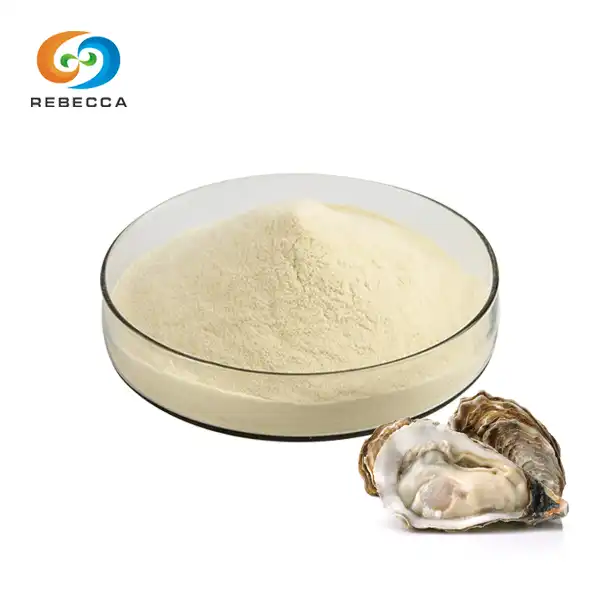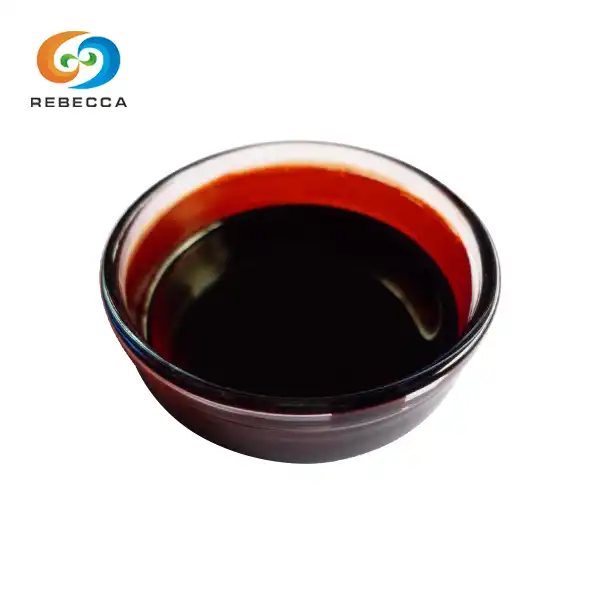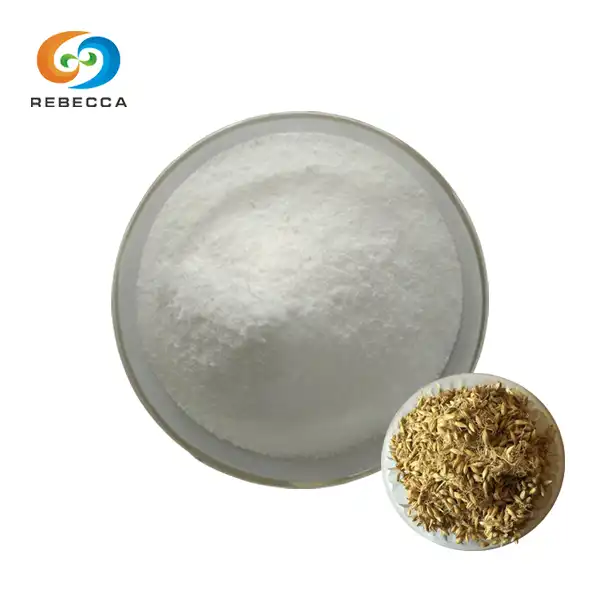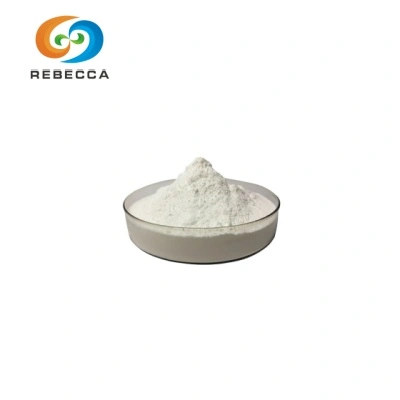Is dl-6 8-thioctic acid the same as alpha lipoic acid?
Alpha-lipoic acid (ALA) is a powerful antioxidant that has gained significant attention in the health and wellness community. However, there's often confusion surrounding its various forms, particularly when it comes to DL-6 8-thioctic acid.
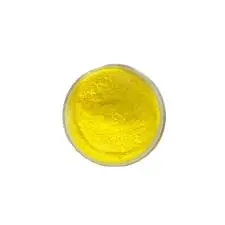
What are the Similarities Between DL-6 8-Thioctic Acid and Alpha-Lipoic Acid?
DL-6 8-thioctic acid and alpha-lipoic acid are essentially the same compound. The term "thioctic acid" is another name for alpha-lipoic acid, and the "DL-6 8" prefix refers to its specific isomeric form. Both compounds share the same chemical structure and formula (C8H14O2S2), making them identical in terms of their basic composition.
Key similarities include:
- Antioxidant Properties: Both DL-6 8-thioctic acid and alpha-lipoic acid are potent antioxidants, capable of neutralizing harmful free radicals in the body.
- Metabolic Function: They play a crucial role in energy metabolism, acting as a coenzyme in mitochondrial energy production.
- Neuroprotective Effects: Both forms have shown potential in protecting nerve cells and improving neurological function.
- Glucose Regulation: Studies have demonstrated their ability to enhance insulin sensitivity and glucose uptake, making them beneficial for managing diabetes.
These shared characteristics make DL-6 8-thioctic acid and alpha-lipoic acid valuable compounds in various health applications, from managing oxidative stress to supporting metabolic health.

Are There Differences in the Biological Activity of DL-6 8-Thioctic Acid and Alpha-Lipoic Acid?
While DL-6 8-thioctic acid and alpha-lipoic acid are chemically identical, there can be subtle differences in their biological activity due to their isomeric forms. Alpha-lipoic acid naturally exists in two isomeric forms: R-lipoic acid (R-LA) and S-lipoic acid (S-LA). The DL prefix in DL-6 8-thioctic acid indicates that it's a racemic mixture of these two isomers.
Some key differences in biological activity include:
- Bioavailability: R-lipoic acid, the naturally occurring form, is generally considered to have higher bioavailability than the S-form. This means that R-LA may be more readily absorbed and utilized by the body.
- Enzyme Affinity: R-lipoic acid has shown a higher affinity for enzymes involved in energy metabolism, potentially making it more effective in this role.
- Antioxidant Potency: Some studies suggest that R-lipoic acid may have slightly higher antioxidant potency compared to the S-form or the racemic mixture.
- Neuroprotective Effects: Research indicates that R-lipoic acid might have more pronounced neuroprotective effects, particularly in conditions like diabetic neuropathy.
Despite these differences, it's important to note that both forms of alpha-lipoic acid (including DL-6 8-thioctic acid) have demonstrated significant health benefits in various studies. The choice between them often depends on specific research protocols or product formulations.

How Does the DL and R Isomer Affect Alpha-Lipoic Acid Properties?
The isomeric composition of alpha-lipoic acid can influence its properties and effectiveness in various biological processes. Understanding these differences is crucial for both researchers and consumers looking to maximize the benefits of ALA supplementation.
Effects of DL and R isomers on ALA properties:
- Stereochemistry: The DL form is a 50/50 racemic mixture of R and S isomers, while the R form is the naturally occurring, biologically active isomer. This difference in stereochemistry can affect how the molecule interacts with cellular components.
- Cellular Uptake: R-lipoic acid has shown superior cellular uptake compared to the S-form or the racemic mixture. This enhanced uptake may lead to more efficient utilization within cells.
- Metabolic Effects: The R isomer appears to be more effective in stimulating glucose uptake and enhancing insulin sensitivity. This makes R-lipoic acid particularly interesting for diabetes management.
- Antioxidant Capacity: While both forms exhibit antioxidant properties, some studies suggest that R-lipoic acid may have a slightly higher antioxidant capacity, potentially offering more robust protection against oxidative stress.
- Neuroprotection: The R isomer has demonstrated more potent neuroprotective effects in some studies, particularly in conditions involving nerve damage or cognitive decline.
- Pharmacokinetics: The R isomer typically has a higher peak plasma concentration and a larger area under the curve (AUC) compared to the S isomer or the racemic mixture, indicating potentially better overall bioavailability.
It's worth noting that while the R isomer shows some advantages in certain aspects, the DL form (racemic mixture) has been widely used in clinical studies and commercial products with significant positive results. The choice between DL and R forms often depends on specific research goals, manufacturing considerations, and intended applications.

DL-6 8-Thioctic Acid Manufacturer
We use high-performance liquid chromatography (HPLC) as our test method to ensure consistent quality. Whether you're a researcher, manufacturer, or health professional, our DL-6 8-Thioctic Acid powder meets the highest standards for your needs.
To request samples, and detailed specifications, or discuss your custom requirements, please don't hesitate to reach out to us at information@sxrebecca.com. At Rebecca Bio-Tech, we're committed to providing you with premium products at competitive prices, supporting your research and product development efforts in the field of antioxidants and metabolic health.
References
- Packer, L., Witt, E. H., & Tritschler, H. J. (1995). Alpha-lipoic acid as a biological antioxidant. Free Radical Biology and Medicine, 19(2), 227-250.
- Biewenga, G. P., Haenen, G. R., & Bast, A. (1997). The pharmacology of the antioxidant lipoic acid. General Pharmacology: The Vascular System, 29(3), 315-331.
- Shay, K. P., Moreau, R. F., Smith, E. J., Smith, A. R., & Hagen, T. M. (2009). Alpha-lipoic acid as a dietary supplement: molecular mechanisms and therapeutic potential. Biochimica et Biophysica Acta (BBA)-General Subjects, 1790(10), 1149-1160.
- Ziegler, D., Ametov, A., Barinov, A., Dyck, P. J., Gurieva, I., Low, P. A., ... & Samigullin, R. (2006). Oral treatment with α-lipoic acid improves symptomatic diabetic polyneuropathy. Diabetes care, 29(11), 2365-2370.
- Jacob, S., Ruus, P., Hermann, R., Tritschler, H. J., Maerker, E., Renn, W., ... & Rett, K. (1999). Oral administration of RAC-α-lipoic acid modulates insulin sensitivity in patients with type-2 diabetes mellitus: a placebo-controlled pilot trial. Free radical biology and medicine, 27(3-4), 309-314.
- Carlson, D. A., Smith, A. R., Fischer, S. J., Young, K. L., & Packer, L. (2007). The plasma pharmacokinetics of R-(+)-lipoic acid administered as sodium R-(+)-lipoate to healthy human subjects. Alternative medicine review, 12(4), 343.
